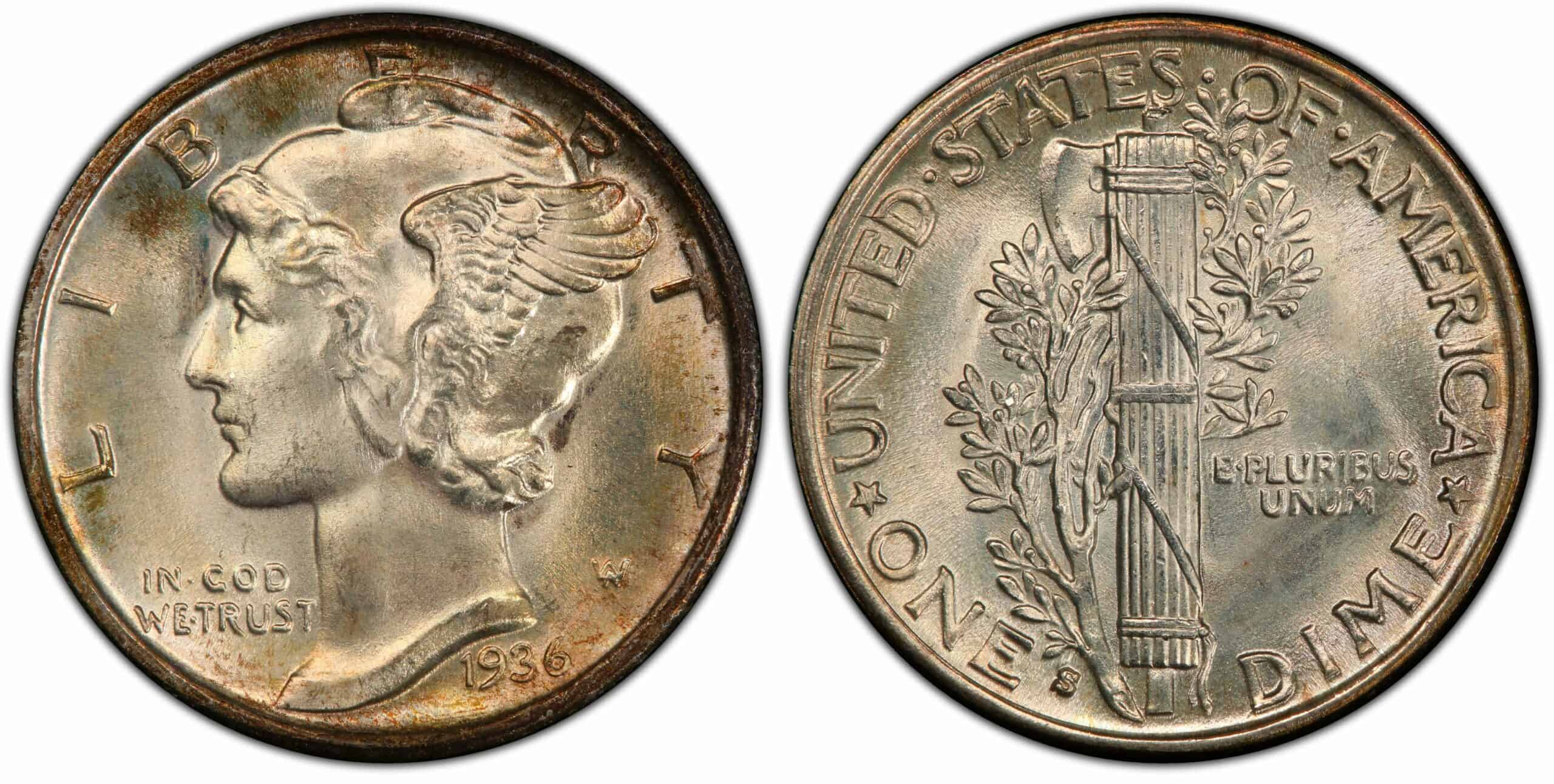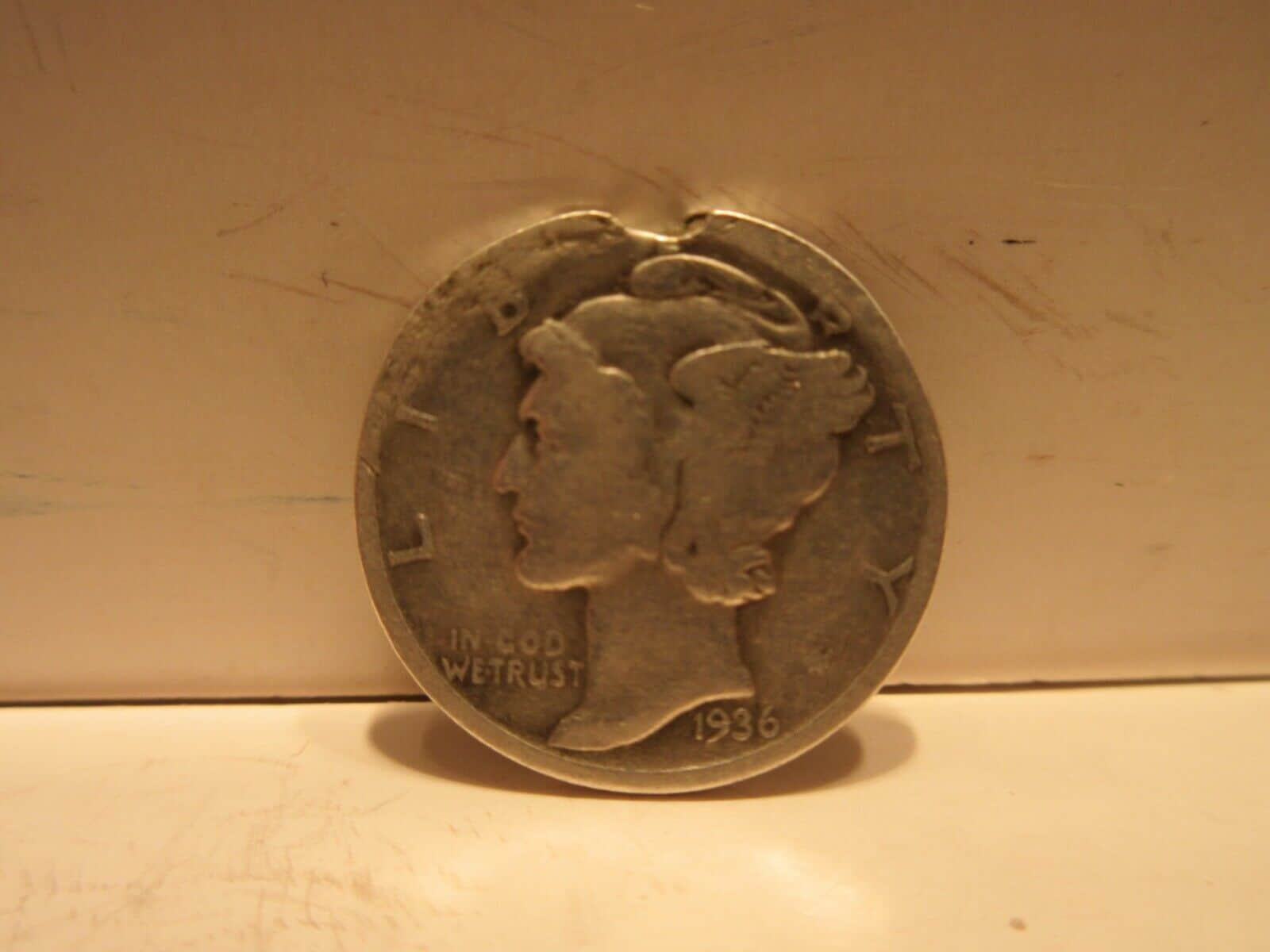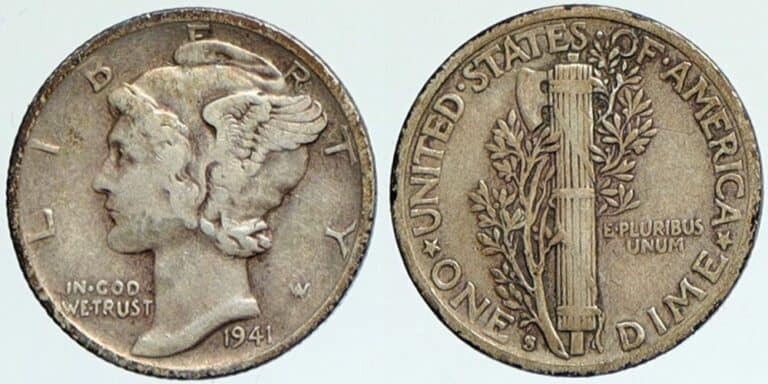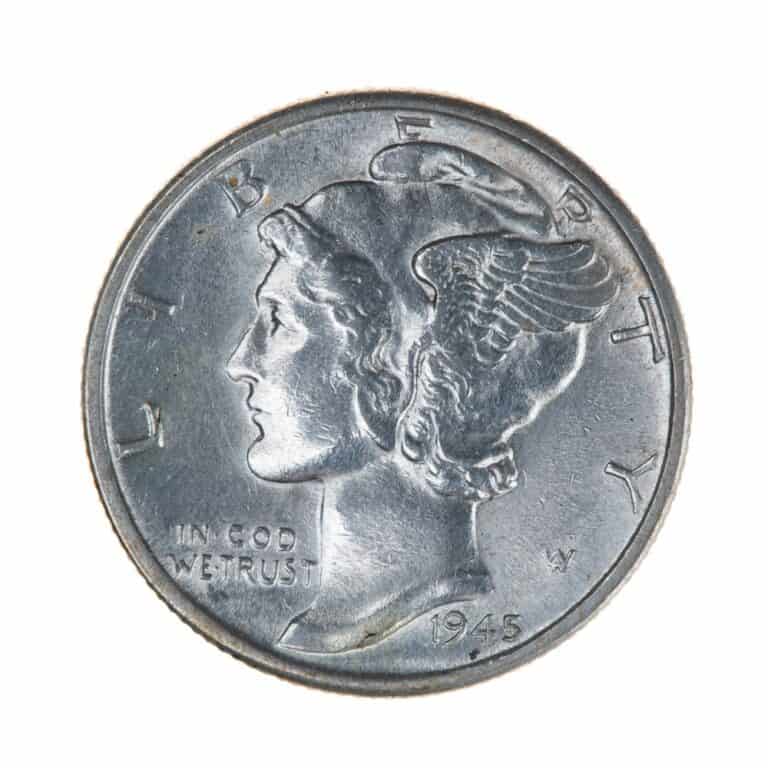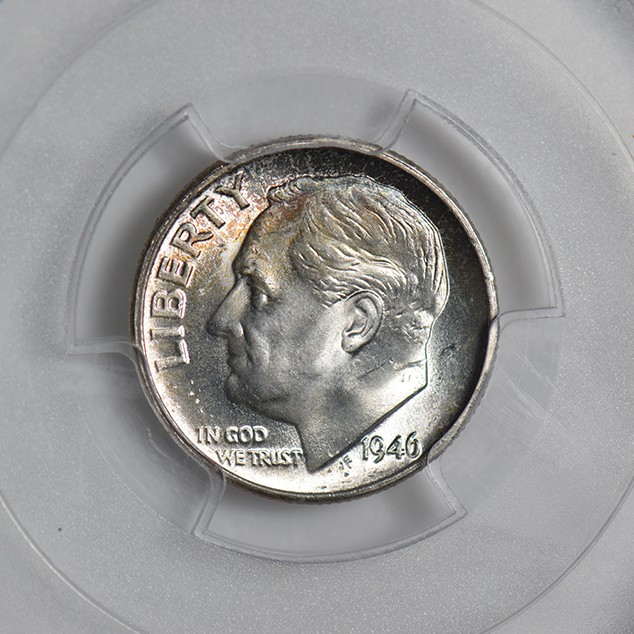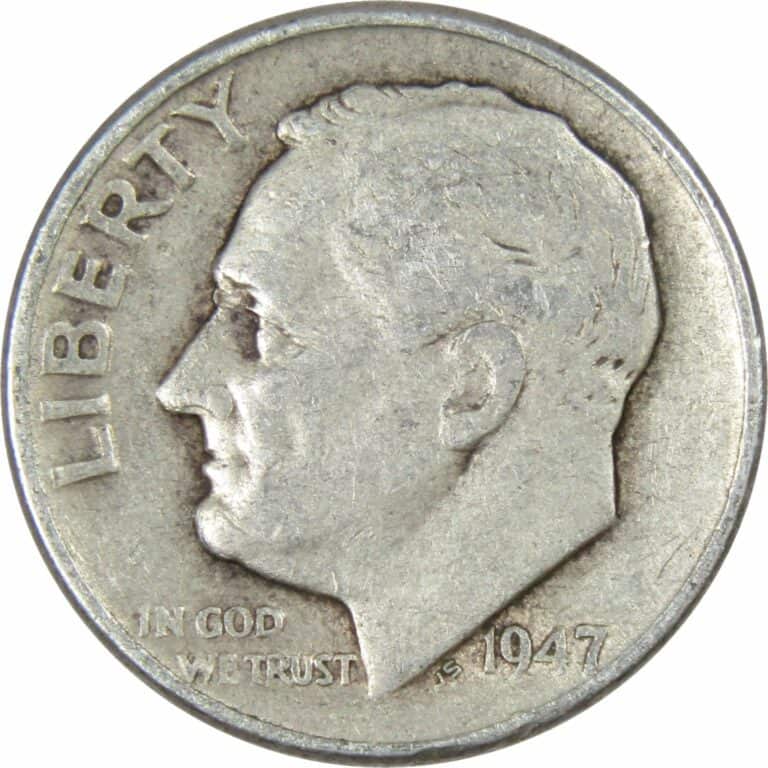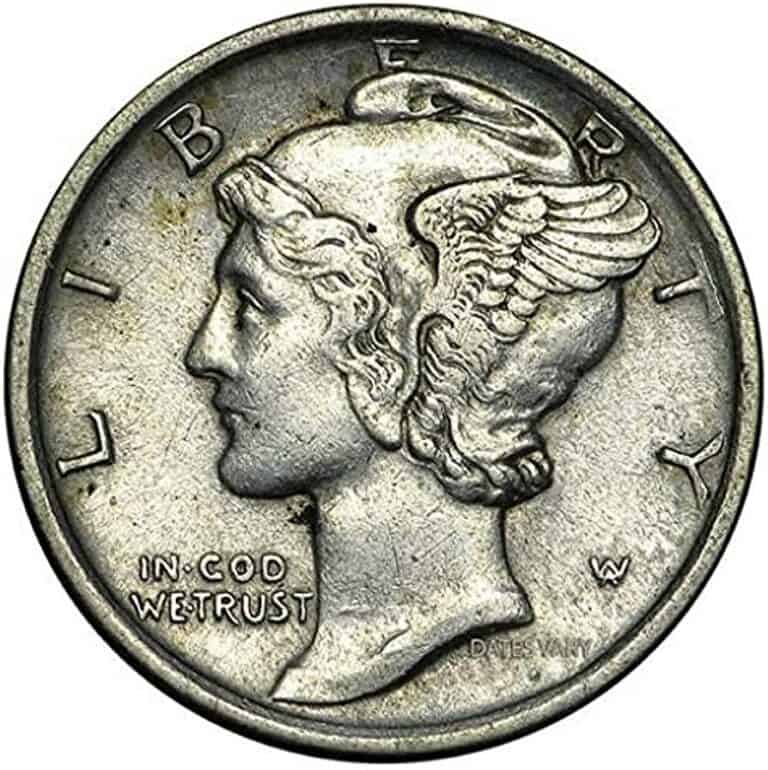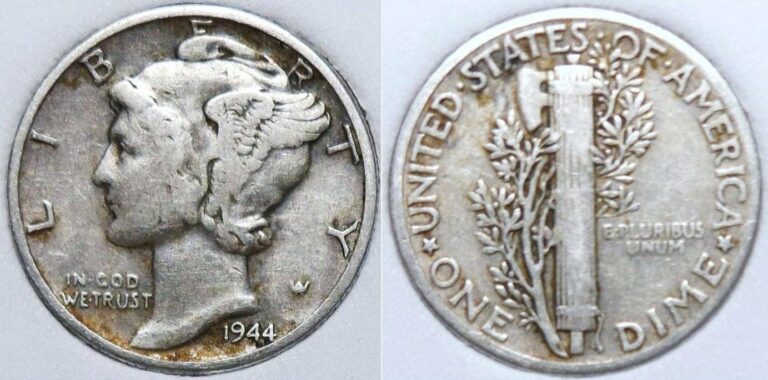1936 Dime Value: How Much Is It Worth Today?
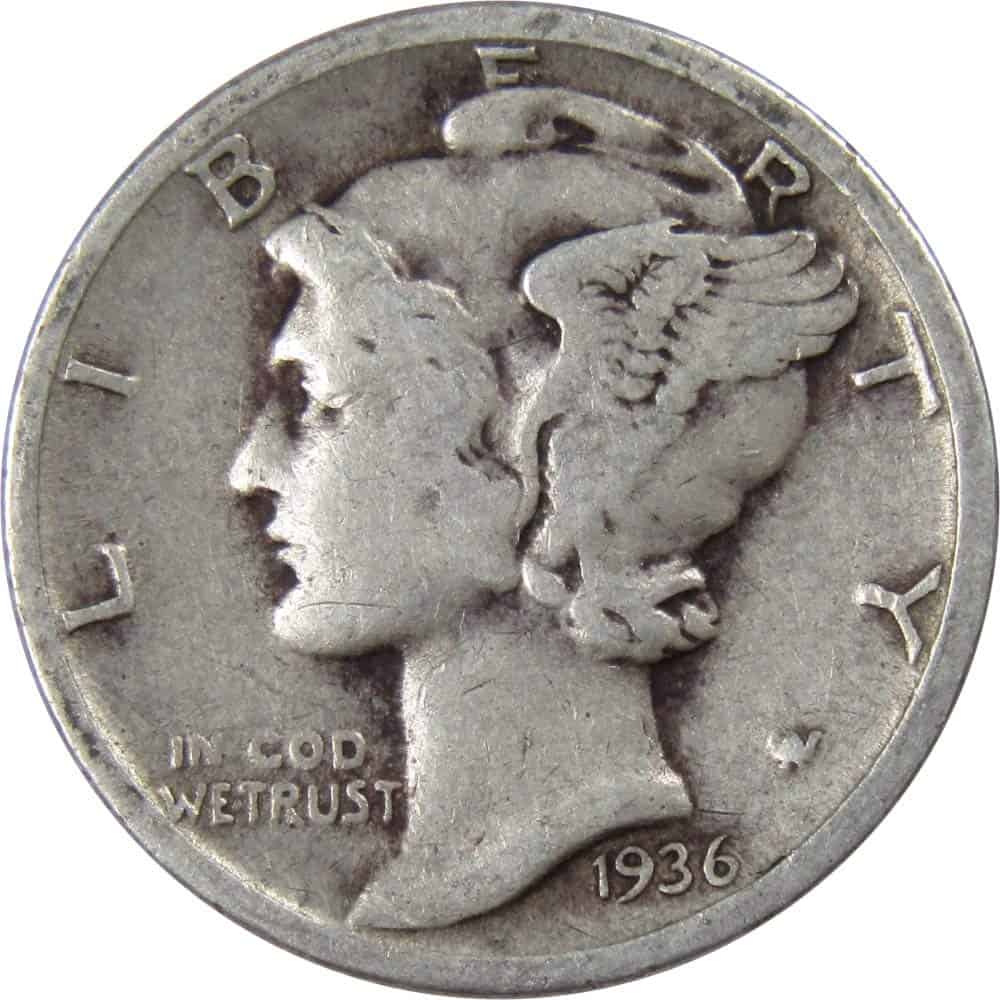
There are many coins in US history that are remarkably beautiful. One of them is a dime that we will be talking about today!
Keep on reading to learn all you need to know about a 1936 dime value, mint marks, appearance, errors, and much more. Whether you are looking to buy or sell this coin or just find out more about it, we have the information you need, so stick around!
1936 Dime Value Chart |
|||
| Condition | 1936 No Mint Mark Dime Value | 1936 D Mint Mark Dime Value | 1936 S Mint Mark Dime Value |
| Poor | $2 | $2 | $2 |
| Fair | $2 | $2 | $2 |
| About good | $2 | $2 – $3 | $2 |
| Good | $2 – $3 | $3 – $4 | $2 – $3 |
| Fine | $3 – $4 | $4 – $5 | $3 – $4 |
| Very fine | $4 – $5 | $5 – $10 | $4 – $5 |
| Extremely fine | $5 – $6 | $10 – $15 | $5 – $10 |
| About Uncirculated | $6 – $10 | $15 – $20 | $10 – $15 |
| Mint state (60-64) | $10 – $20 | $20 – $50 | $15 – $20 |
| Mint state (65-67) | $20 – $50 | $50 – $150 | $20 – $50 |
| Mint state (68-70) | $50 – $1 000 + | $150 – $1 000 + | $50 – $1 000 + |
1936 No Mint Mark Dime Value

A dime from 1936 belongs to the category of Mercury dimes. It weighs only 2.5 grams or 0.08 oz. and it is 17.9 millimeters (0.7 inches) in diameter.
If you find a dime from 1936 and you cannot see a mint mark, it means that the coin was produced in the Philadelphia Mint. This factory made more than 87 000 000 dimes back then. Therefore, this coin, although beautiful, is not that rare.
1936 Dime History
The US Mint first issued dimes in 1796. Up until 1965, these coins were made using 90% silver and 10% copper. Since then, dimes have been made of copper and nickel clad.
The obverse of a dime featured Liberty in different forms for hundred and fifty years, until 1946. The theme of the reverse was an eagle until it was replaced by a wreath in 1837. Between 1916 and 1945 the back side was reserved for a fasces and a branch of olive.
Since 1946, the US Mint has been producing Roosevelt dimes, featuring the ex-president Franklin Roosevelt on the obverse and a torch, a branch of olive, and a branch of oak on the reverse, symbolizing freedom, peace, and strength.
1936 Dime Appearance
A dime from 1936 is the so-called Mercury dime, which is, even according to the US Mint’s official website, one of the most wonderful coins in US history. It was designed by Adolph Alexander Weinman, a sculptor born in Germany.
The front side features Liberty who wears a winged cap. This part of the design symbolizes both freedom in general and freedom of speech, the staples of the US constitution.
The top of the coin is engraved with the word LIBERTY, the left side with the words IN GOD WE TRUST, and the right side is the year 1936.
The reverse side depicts fasces and a branch of olive, representing the country’s military on one hand and peace on the other.
The top of the coin is engraved with the country’s name, the bottom is reserved for the denomination, and to the right side of the center is the US motto, ET PLURIBUS UNUM.
1936 No Mint Mark Dime Price
A dime from 1936 with no mint mark is worth at least its melting value, which is, at the time of writing (March 2023) around $2. Coins in good to extremely fine condition are worth up to around $6, while those uncirculated can reach the price of around ten dollars.
Dimes from 1936 that are graded MS60 to MS64 rarely exceed the price of $50, but the value increases for the coins that are graded 65 and more.
According to the online auctions from the past several years, selling a 1936 dime with the grade 65 or 66 can get you around a hundred dollars on average.
A 1936 dime graded MS67 can be worth anywhere between $100 and $600. On the other hand, grade 68 almost always exceeds $1 000, with many coins sold for between $3 000 and $5 000.
The most expensive dime from 1936 with no mint mark was sold at an auction for a remarkable $15 275 in 2020.
1936 D Mint Mark Dime Value
Dimes that have a D mint mark were produced in the Denver Mint. This factory made little over 16 million dimes in 1936. They are also quite common in the market and it’s not difficult to find them online or at auctions.
1936-D dimes have the same design as the dimes without a mint mark, except for the letter D between the words ONE and DIME at the bottom of the reverse of the coin. This letter indicates the location in which the coin was minted, in this case, Denver.
A dime from 1936 with a D mint mark has the same dimensions and silver content as its counterpart without a mint mark. Therefore, the price of this coin starts at around $2 for coins in poor condition, simply because of the silver’s melting value.
If you have a dime that is in good condition, you can expect to sell it for several dollars, and the same goes for those in fine condition. Extremely fine and uncirculated dimes’ price range is $10 to $20.
The 1936-D dimes that are graded 60 to 65 are usually $20 to $50, but there were some sold for as much as $250 in the past several years.
Dimes with a grade of 66 sell for $80 to $200 on average, but some specimens reach the price of several hundred dollars occasionally.
Ten-cent coins from 1936 graded MS67 more often than not exceed the price of a thousand dollars. However, some sell for as little as $200.
The most expensive dime from 1936 was sold for $14 950 in 2003. It was graded MS68. In the past five years, the highest price a dime of the same grade reached was $6 000 in 2019.
The most recent winning bids at auctions include 1936-D dimes graded 65 and 66. The two MS65 dimes sold for a bit over $150 each and the one graded 66 was sold for $300. This is as of March 2023.
Generally speaking, it is difficult to be sure of how much your coin can be sold. This doesn’t depend only on the condition and the rarity of a coin, but also on the currently interested buyers and how much they are willing to pay.
If you think that your coin is worth more than what the buyers are offering, wait until someone willing to pay more shows up. It may take days, months, or even years, but if you are not in a hurry, it can be very well worth waiting.
1936 S Mint Mark Dime Value
The third variety of a 1936 dime is the one with an S mint mark on the reverse. This letter means that a dime was produced in the San Francisco Mint. In the case of a dime from 1936, this mint made over nine million of these coins.
The 1936-S dime variety is the rarest out of the three, but it is similar in value to the other two. The starting price is also two dollars because of the silver content, but it significantly rises if a coin is highly graded.
Good to uncirculated coins can be worth up to approximately $15. Dimes in the mint state are anywhere between $20 and several thousand dollars.
An important characteristic of a Mercury dime from 1936 that can raise its price by hundreds of dollars is FB or full-band. If a coin has an FB mark next to its grade, it means that it has a high-quality die strike and that all the lines on the reverse are clearly visible and separated.
This is why, for example, a dime from 1936 with a grade of 66 can sell for around $70 but the same dime with the same grade and the FB mark can reach the price of $431, like the one sold in February 2021.
Just last month, in February 2023, a dime from 1936 graded 67 + FB was sold for $1 700.
Furthermore, the most valuable 1036-S dime was sold at an auction in 2006 for $23 000! It had a grade of MS68 + FB, so it’s no wonder that it was so expensive.
There aren’t any dimes from 1936 with grades 69 or 70 seen at auctions in the past five years, at least. However, if you do have one that was safely stored untouched for almost ninety years, you may be able to get rich in a matter of days.
Who knows? Go through the old storage boxes and cupboards, you can never know if one or more of the old coins got lost and are waiting for you to find them. It’s worth checking no matter how small the chances are!
1936 Dime Grading
If you think you have a valuable dime from 1936 in your collection, it is crucial you get it professionally graded. A coin grader will give your dime a grade from 1 to 70 which will ultimately determine the final price of your dime.
People are more likely to buy graded coins than just trust a picture on the Internet or the seller’s word. This is for a reason – you shouldn’t spend a lot of money on a coin if you are not sure what exactly you are paying for.
Rare 1936 Dime Error Lists
A coin grading service can also determine if your dime has any rare errors that make it special and more valuable. If you are not experienced in grading coins, you are likely to miss telltale signs that your dime is, in fact, expensive.
Here are some of the errors that can appear on a 1936 dime, whether it was minted in Philadelphia, Denver, or San Francisco.
1936 Dime Off-Center
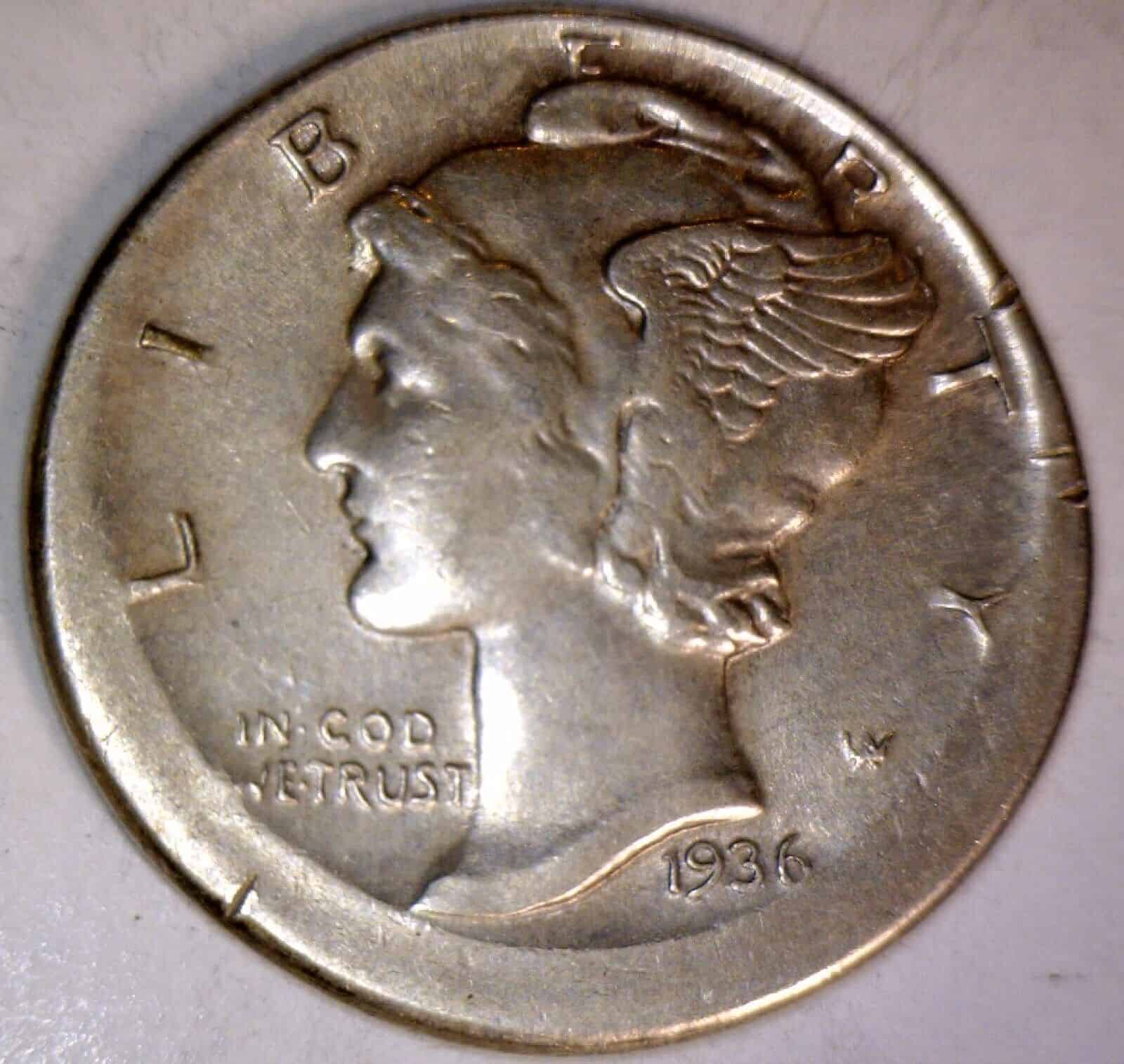
The off-center mistake happens when the machine that holds planchets that are about to be engraved is not properly aligned with the dies that are supposed to strike the design onto the coin.
This mistake results in a part of the design missing. It is easy to notice because one part of a dime will be engraved and the rest will be just a flat surface. The size of the flat area depends on the severity of the error.
1936 Dime Double Die
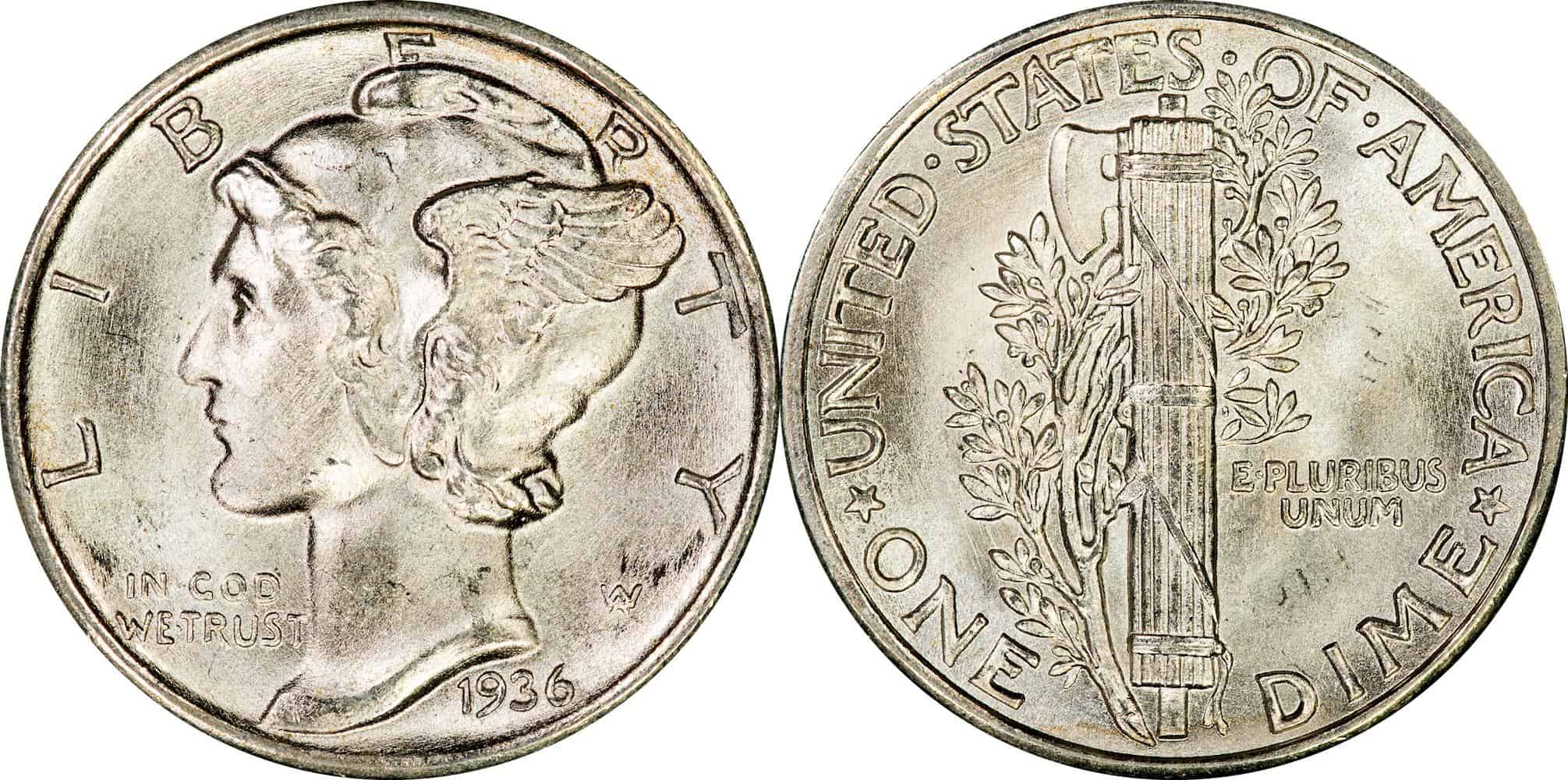
Double die error is a result of the dies striking twice when engraving the design onto a planchet. Sometimes it’s not easy to spot this mistake so you need to observe every part of the dime carefully.
1936 Die Break
Die breaks are errors in which the damaged dies strike the planchets, leaving behind inaccuracies in the design. These are also difficult to notice if you don’t have a dime in perfect condition to compare it to, so use a high-quality picture on the Internet instead.
1936 Clipped Planchet
A clipped planchet error occurs when the machines that make planchets incorrectly clip a piece of metal, leaving a small or a large part of a coin around the edges empty. This mistake is quite interesting so if you have one, price it accordingly!
1936 Dime FAQ
How much is a 1936 dime worth?
A dime made in 1936 can be worth anywhere between two and several thousand dollars. The price depends on the condition of the coin, the quality of the strike, potential mint errors, and more factors that go into determining the value of a coin.
What is a 1936 dime made of?
Dimes were made of 90% silver and 10% copper in 1936.
What was on the dime in 1936?
The dime from 1936 features Liberty on the front and fasces with an olive branch on the back side of the coin. It is one of the prettiest coin designs in the history of the US Mint.

